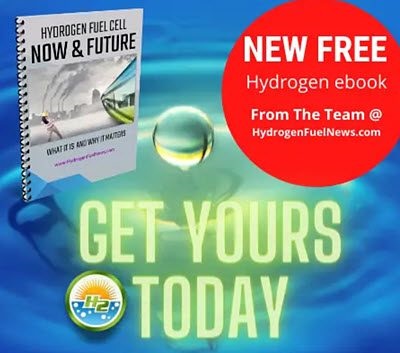
Extraordinary Hydrogen Fuel Making Catamaran Solar-Infused Armor
September 3, 2023The 90-foot craft from Sunreef not only runs on H2 but actually produces it on board.
Sunreef has announced that it intends to launch a catamaran that will not only run on hydrogen fuel, but it will also produce it for itself.
The watercraft is able to operate without producing any greenhouse gas emissions.
The hydrogen fuel using and producing catamaran is called the Zero Cat. It is presently in its development stage and will have a number of different forms of innovative green technologies aboard. Mainly, this involves the production of its own fuel while it is sailing, providing “unlimited autonomy” according to the company.
The catamaran measures just over 90 feet and will use a special type of generator to produce the H2 from methanol. Sunreef’s announcement of its multihull watercraft didn’t provide many details about the system, but did say that it would produce clean, emission-free energy that will be used both for the electric propulsion of the vessel and for its hotel load.
Solar cells will also be built into the vessel’s entire bodywork to power the hydrogen fuel production.
The solar cells will generate electricity during the daytime, providing the catamaran with power for its operation and for the H2 production process. The Polish yard has already shown off this patented “solar skin” on several watercraft, including an 80-foot catamaran, a 100-foot sailboat and an 80-foot sailboat.

The 80-foot catamaran that has used the solar skin is equipped with 160 kW main motors, achieving speeds as high as 10 knots.
Sunreef has made its way into the headlines a number of times over the last couple of decades, having become a top choice for luxury catamaran building. The company has delivered vessels to Rafael Nadal, the tennis celebrity, as well as Fernando Alonso, the two-time Formula 1 champ. That said, the company’s R&D team has said that it continues to push forward to accomplish new achievements in sustainable sailing.
A zero-emission sailing experience that is “exceptional”.
 “Our goal is to revolutionize the industry by offering discerning customers an exceptional zero-emission sailing experience,” said Nicolas Lapp, Sunreef co-founder and chief technology officer in a statement about the hydrogen fuel producing catamaran. “This project represents a milestone in our ongoing commitment to protecting our oceans and preserving the natural beauty of the sea.”
“Our goal is to revolutionize the industry by offering discerning customers an exceptional zero-emission sailing experience,” said Nicolas Lapp, Sunreef co-founder and chief technology officer in a statement about the hydrogen fuel producing catamaran. “This project represents a milestone in our ongoing commitment to protecting our oceans and preserving the natural beauty of the sea.”
The Hidden Environmental Cost of Luxury Super Yachts
Super yachts, the epitome of luxury and opulence, have long been a symbol of the affluent lifestyle. However, with climate change concerns escalating, the environmental impact of these floating palaces is coming under scrutiny. There are over 9,300 super yachts, defined as privately owned vessels at least 78 feet in length, sailing the seas globally. These vessels represent a staggering value of over $54 billion. Yet, their environmental cost is equally alarming. Super yachts, along with other large ships, contribute significantly to carbon dioxide emissions. These emissions often fly under the radar as they are released at sea and not on land.
According to industry data, a typical superyacht can emit over 7,000 tonnes of CO2 annually, especially if it is equipped with extravagant features such as a helicopter pad, pools, and submarines. This emission level is a staggering 1,500 times that of a family car. Considering these startling figures, maritime construction yards are now facing pressure from environmentalists to reduce their pollution footprint and innovate towards cleaner, more sustainable yacht designs.
In conclusion, the environmental cost of luxury super yachts cannot be ignored. With their significant contribution to carbon dioxide emissions, these symbols of wealth and opulence are under increasing scrutiny. The move by Sunreef to design a zero-emission catamaran that runs on hydrogen fuel and produces it onboard is a revolutionary step towards sustainable sailing. This innovation not only promises to reduce the carbon footprint of yachting but provides an exceptional sailing experience for the environmentally-conscious seafarer.
While we revel in the beauty and grandeur of these floating palaces, it’s imperative that we also commit to preserving our oceans and the natural beauty of the sea. The journey towards greener, more sustainable yacht designs has begun, and it is a journey that the industry needs to embark on collectively, with urgency and commitment.

FAQs on Sunreef’s Hydrogen Fuel Catamaran
1. What is special about Sunreef’s new catamaran? Sunreef’s new catamaran, named the Zero Cat, is a 90-foot watercraft that not only runs on hydrogen fuel but also produces it onboard. This makes it a zero-emission vessel.
2. How does the catamaran produce hydrogen fuel? The Zero Cat uses a special type of generator to produce hydrogen from methanol. Solar cells built into the vessel’s bodywork also power the hydrogen fuel production process.
3. What is the purpose of the solar cells on the catamaran? The solar cells on the Zero Cat generate electricity during the daytime, providing power for the operation of the catamaran and the hydrogen production process.
4. Does the catamaran have any other energy sources besides hydrogen fuel? Yes, the Zero Cat also utilizes solar energy which is collected through a patented “solar skin” built into the vessel’s entire bodywork.
5. What are the benefits of this hydrogen fuel catamaran? The primary benefit is that the Zero Cat operates without producing any greenhouse gas emissions, making it an environmentally friendly option for sailing.
6. Who is behind the creation of the Zero Cat? The Zero Cat is being developed by Sunreef, a company known for building luxury catamarans and has delivered vessels to notable individuals such as Rafael Nadal and Fernando Alonso.
7. What is the goal of Sunreef with this project? According to Nicolas Lapp, Sunreef co-founder and chief technology officer, their goal is to revolutionize the industry by offering customers an exceptional zero-emission sailing experience. This project represents a milestone in their ongoing commitment to protecting oceans and preserving the natural beauty of the sea.
8. When will the Zero Cat be available? The Zero Cat is currently in its development stage. More details about its availability will be provided by Sunreef once the project progresses further.
Ready to test your knowledge on the most abundant element in the universe? Take our fun and engaging Hydrogen Quiz now! [forminator_quiz id=”58712″]




 With over 15 years of reporting hydrogen news, we are your premier source for the latest updates and insights in hydrogen and renewable energy.
With over 15 years of reporting hydrogen news, we are your premier source for the latest updates and insights in hydrogen and renewable energy.
Why methanol rather than sea water?
Exactly my question. I suspect because the patents for seawater electrolysis are owned by Chinese and some Arab Country (I forget whether it was Saudi Arabia, Kwait of United Arab Emirates) and so, without desalination equipment, that might add weight onboard, H2) electrolysis might not be an option. I also wonder about the difference in yields, not being an electrochemist, but would love to find out, when I find the time.
Zero Cat must use biomethanol not fossil methanol to support its claim that “Zero Cat operates without producing any greenhouse gas emissions” as fossil methanol CH4 includes fossil carbon; or does it use biomethane?